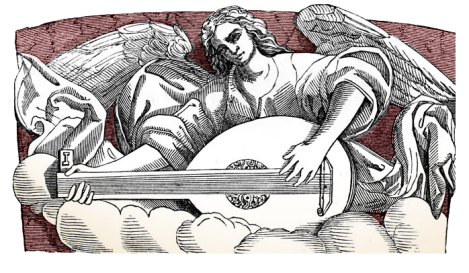
In the year 597 A.D., a Benedictine monk sailed from Rome to East Kent, England. There he converted King Aethelbert of Kent from paganism to Christianity, and King Aethelbert became known as the last pagan king of England. Churches were built across the landscape and St Augustine’s Abbey was founded in Canterbury.
Before their conversion to Christianity, the Anglo-Saxons followed a poytheistic religion, like many other Germanic peoples. They worshiped the gods of the Norse pantheon, with Woden (or Odin) at the head. As they switched to Roman Catholicism through the influence of Celtic Christianity and Augustine, some of their pagan ideas became folklore, or else were reinvented in a Christian light. A few pagan practices, however, remained stubbornly in place.
The days of the week are a great example of this. The pagan names for week-days remain with us even today. Robert Lacey describes in his book The Year 1000 the origin of the names of the week-days. Sunday and Monday are simple, meaning “Sun”-day and “Moon”-day. “Tiw’s”-day, however, refers to Tiw, the pagan god of war. “Woden’s” day refers to Woden, of course. “Thor’s” day refers to the God of thunder. “Frig’s”-day is for Frigga, goddess of fertility and growth. And “Saturn’s”-day is a leftover of the Roman mythology (Lacey, 143).
At first, the Christians and pagans remained relatively tolerant of one another. Even Alfred the Great, King of Wessex from 871 to 899 and regarded as a saint by some Catholics, claimed descent from the pagan god, Woden (along with several Biblical figures). Religious extremism, such as one might associate with the holy Crusades (1095-1291), was not present so much as the practicality of religion and its function in society.
Due to their increasing presence in England from the 8th century onward, more and more Scandinavians were adopting the Christian religion—at least in proclamation.
Haakon I of Norway (921-961), also called “Hakon the Good,” was fostered into Christianity by the English King Athelstan. He returned to Norway as a Christian king, but his countrymen were not yet receptive to the religion. Even while Haakon lay on his deathbed, his court poet composed poem about his spirit journeying to Valhalla. Large stone crosses and other Christian symbols remaining along the Norwegian landscape suggest that the influence of Haakon’s religion did not completely fade away, however. In 995 Olaf Tryggvason built the first church in Norway, and his successor, Olaf II or Saint Olaf, managed to at last convert the Norwegians to Christianity.
Denmark follows a similar timeline. Harald Bluetooth, Canute’s grandfather, is known now as the first officially Christian King of Scandinavia. He ruled from around 958 to ~986 as King of Denmark, and a few years in between as King of Norway, as well. How Harald Bluetooth became Christian is a matter of controversy, though it clearly had something to do with his confrontation against Otto I of the Holy Roman Empire. Harald’s son and heir, Sweyn Forkbeard, continued in the Christian tradition though he was clearly quite tolerant of ongoing paganism. Due to some rather rowdy behavior, historians tend to view Sweyn as a bit of a “heathen” at heart, who used Christianity only for political maneuvering. It would be his son’s, Canute’s, acceptance of Christianity that had the most wide-reaching and permanent effect.
So if kings like Sweyn used Christianity mostly for political purposes, how much did this truly affect the Scandinavians’ daily lives, especially that of the Vikings? A potent example of this culture’s struggle with Christianity can be found in an excerpt of one of the Icelandic tales, Njal’s Saga. It portrays the difficulty of embracing a lifestyle of love and gentility in a culture of ongoing violence.
“There are two alternatives for us, and neither is good: either to turn back, and that will mean our certain death, or else to set fire to the house and burn them inside, and that is a great responsibility before God, for we too are Christians. However, that is the course we must take; so let us set fire to the place at once.”
—Hollander, Njal’s Saga, pg. 256 (+)
*
RELEASING SEPTEMBER 7:

Runa expects to live her entire life isolated in the woods until she meets Thorkell the Tall. She tries to conform to society through a traditional marriage, but at a high cost that may break Thorkell's tolerance.
*
WORKS CITED/CONSULTED
(+) Hollander, Lee M. Njal’s Saga. Wordsworth Classics of World Literature, London. 1998.
Lacey, Robert and Danny Danziner. The Year 1000: What Life Was Like at the Turn of the First Millennium. Little, Brown and Company, 1999. Print.
And of course, Wikipedia!
**Image Source: Thanks to Public Domain Images at Karen’s Whimsy for the public domain angel image



















